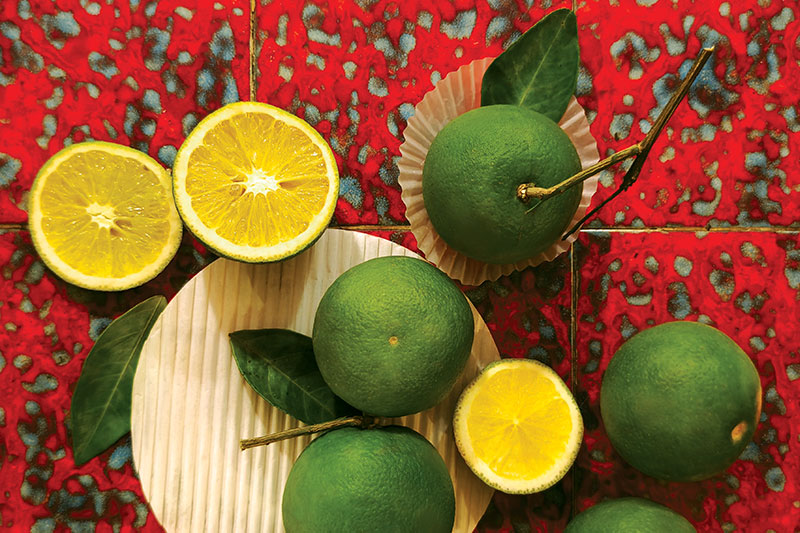
Thailand’s Forgotten Citrus Gem
The elusive Som Cheng hides health-boosting benefits beneath a thick rind
Words: Ariya Chaiyarit
Photo & Style: Rinrin Intravut
The most common and widely available Thai orange is the sweet fruit known as Som Khiew Waan. However, it has a subtle – and some say more delicious – cousin that appears far less often in shops and markets.
Foodies describe Som Cheng’s flavour as a blend of orange and pomelo and prize its succelent flesh hidden inside a thick green-yellow rind. Not too sweet and not too sour, with a soft citrusy aroma, Som Cheng closely resembles a tangerine. But the fruit fell from favour because it cannot be peeled with the fingers, instead requiring a knife to cut and separate the segments.
These days, Som Cheng is still popular at Chinese festivals and weddings as the name sounds like the Chinese words for luck and wealth.
Apart from being considered auspicious, Som Cheng is full of health boosters. The tangerine-like fruit comes packed with anti-inflammatory vitamins C and A, alpha and beta-carotene, vitamins B1/B5/B6/B9, folate, calcium, potassium, magnesium, protein, fibre, and antioxidants. Eating Som Cheng is believed to promote heart and eye health, reduce the risk of certain types of cancer and diabetes, prevent anaemia and support immunity.
Som Cheng is usually consumed fresh, though it’s best to remove the white pith around the flesh as this can be slightly bitter. This small orange can also be found in desserts, drinks, jelly, juice or even just steeped in syrup.
Som Cheng can be difficult to find in fresh markets. Instead, hunt for them at big fruit stalls and supermarket and you could be rewarded with a rare taste of Thai citrus heaven.
